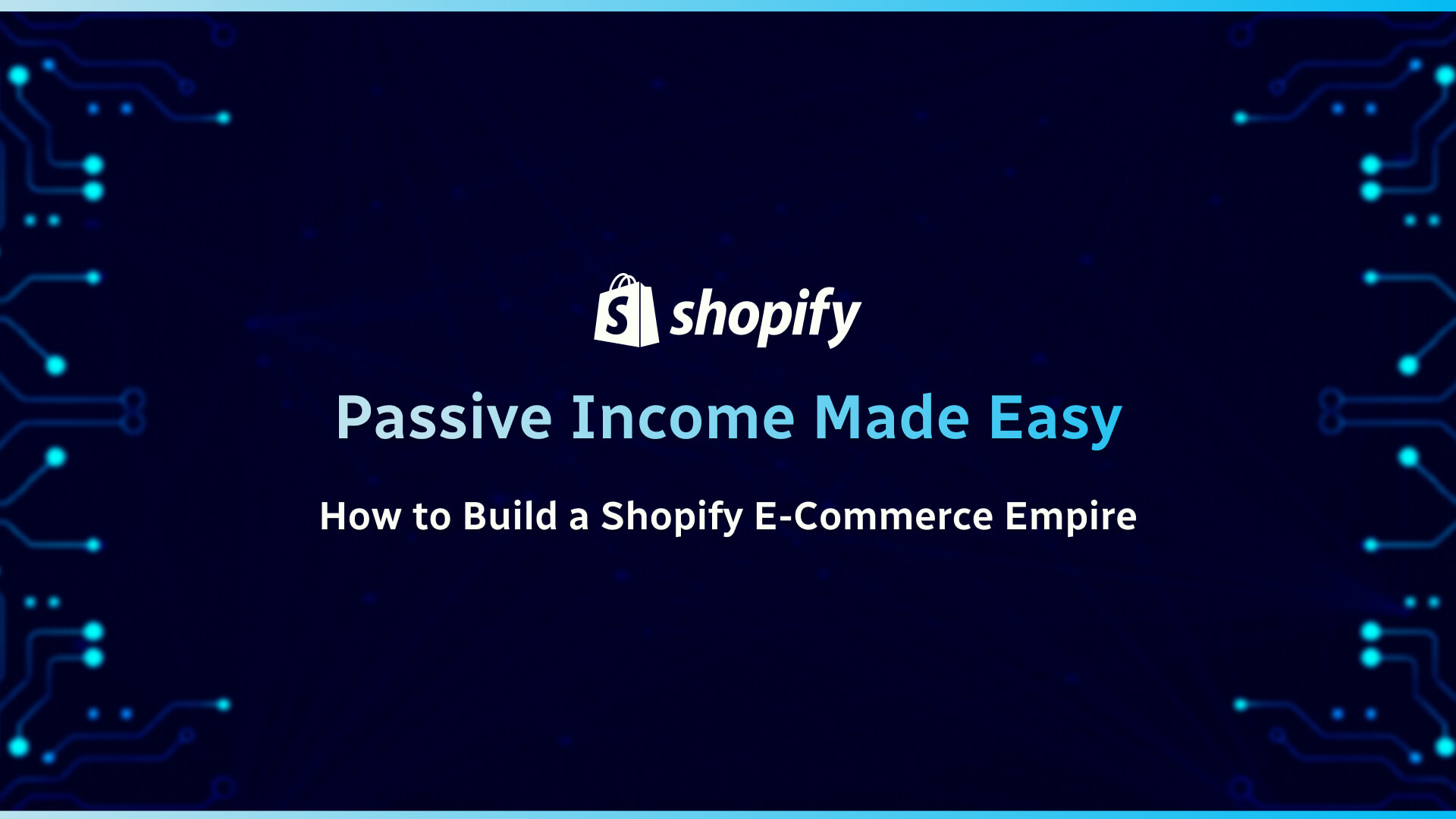- Table of Contents
- Introduction
- Setting Up Your Shopify Store
- Generating Traffic to Your Store
- Building Your Brand and Customer Base
- Expanding Your E-Commerce Empire
- Automating Your Business for Passive Income
- Conclusion
Introduction
Passive income is money earned regularly with little to no effort required to maintain it. This type of income is generated from investments, rental properties, or businesses that operate without requiring active participation from the owner. Passive income is important because it provides a source of income that is not reliant on the traditional model of trading time for money. With passive income, individuals can earn money while they sleep or while focusing on other ventures, allowing them to achieve financial freedom and more flexibility in their daily lives.
Shopify as a platform for building an e-commerce business
Shopify is an e-commerce platform that allows individuals and businesses to create their own online stores and sell their products to customers around the world. It provides a user-friendly interface, a wide range of customizable themes, and powerful tools for managing inventory, processing payments, and fulfilling orders. With Shopify, individuals can easily set up their own e-commerce business without needing to have advanced technical skills or experience in website development. It also offers various apps and plugins that enable users to enhance their stores with features like email marketing, social media integration, and abandoned cart recovery. As a result, Shopify has become a popular choice for entrepreneurs and small businesses looking to establish an online presence and sell their products online.
Potential for creating a successful e-commerce empire with Shopify
Shopify offers a range of features and tools that make it possible for individuals to create a successful e-commerce empire. Here are some reasons why:
- User-friendly interface: Shopify provides a simple and intuitive interface that makes it easy for users to create and manage their online stores.
- Customizable themes: Shopify offers a wide range of customizable themes that allow users to create a unique and professional-looking store that reflects their brand and style.
- Payment and shipping options: Shopify integrates with a variety of payment gateways and shipping providers, allowing users to offer a seamless checkout experience and fast and reliable shipping.
- App store: Shopify’s app store offers a wide range of apps and plugins that enable users to add new features and functionality to their store, such as email marketing, social media integration, and inventory management.
- Scalability: Shopify is designed to scale with businesses as they grow, allowing users to add new products, features, and employees as needed.
- Marketing tools: Shopify offers a range of marketing tools, such as SEO optimization, email campaigns, and social media advertising, that enable users to drive traffic and sales to their stores.
Setting Up Your Shopify Store
Explain the process of creating a Shopify account
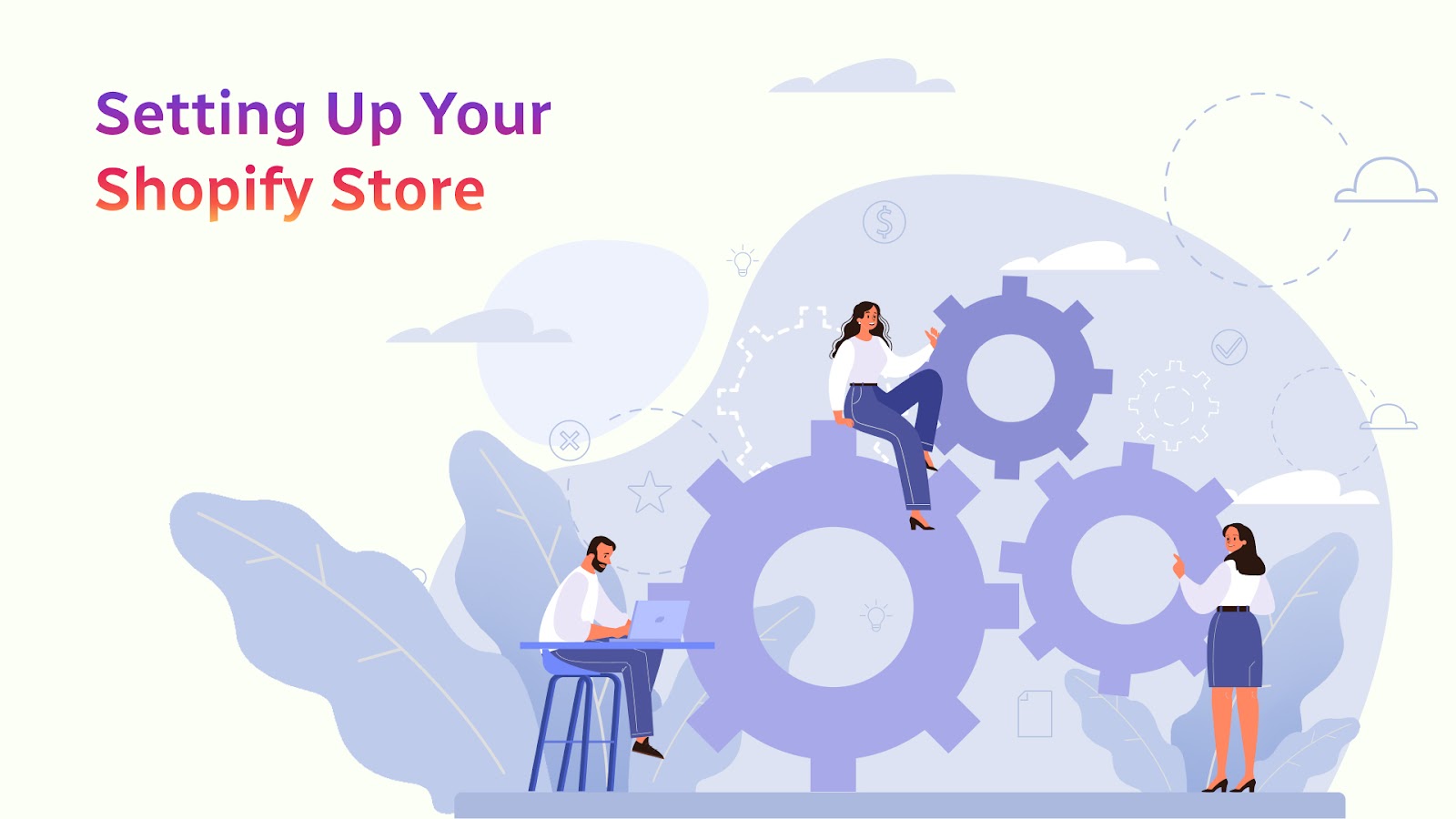
Creating a Shopify account is a simple process that can be completed in just a few steps:
- Go to the Shopify website: To get started, go to www.shopify.com and click on the “Get Started” button.
- Enter your email address: On the next page, enter your email address and click “Start free trial.”
- Create a password: Choose a strong password that meets Shopify’s security requirements and click “Create your store now.”
- Enter your store information: On the next page, enter your store name and answer a few questions about your business, including your address, phone number, and industry.
- Customize your store: Choose a theme for your store and customize the design to match your brand and style.
- Add products: Add your products to your store, including product descriptions, prices, and images.
- Set up payment and shipping options: Set up your payment and shipping options, including the payment gateways you want to use and the shipping methods you want to offer.
- Launch your store: Once you’ve completed these steps, you can launch your store and start selling your products online.
Steps of setting up your store
Here are the steps for setting up your Shopify store:

- Sign up for a Shopify account: Go to www.shopify.com and sign up for a free trial account. Once you’ve created your account, you’ll be taken to your Shopify dashboard.
- Choose a theme: Click on “Online Store” on the left-hand side of your dashboard, and then click “Themes.” Choose a theme from the Shopify theme store or upload your own.
- Customize your theme: Use the theme editor to customize your theme. You can add your own logo, change the colors and fonts, and customize the layout of your website.
- Add products: Click on “Products” on the left-hand side of your dashboard, and then click “Add product.” Enter the details for each product, including the name, description, price, and images.
- Set up payment and shipping options: Click on “Settings” on the left-hand side of your dashboard, and then click “Payments” and “Shipping.” Choose the payment gateways and shipping methods you want to offer to your customers.
- Customize your website: Use the Shopify editor to customize your website further. You can add pages, such as an “About Us” or “Contact Us” page, and customize the navigation menu.
- Launch your store: Once you’ve completed these steps, you’re ready to launch your store. Click on “Settings” on the left-hand side of your dashboard, and then click “Billing.” Choose a Shopify plan that meets your needs, and then enter your billing information.
Tips for optimizing your store for conversions and user experience
Optimizing your Shopify store for conversions and user experience can help you attract more customers, increase sales, and build a loyal customer base. Here are some tips to help you optimize your store:
- Keep your store design simple: A cluttered and complicated website can be overwhelming for users. Keep your design simple, clean, and easy to navigate.
- Use high-quality images: Use high-quality images that show your products from multiple angles and in different settings. This can help users visualize the product and make a purchase decision.
- Make your product descriptions clear and detailed: Use clear and detailed product descriptions that provide all the information users need to make an informed purchase decision.
- Use social proof: Use social proof, such as customer reviews and testimonials, to build trust with your users and encourage them to make a purchase.
- Optimize your checkout process: Make your checkout process as easy and streamlined as possible. Use a one-page checkout process, offer multiple payment options, and make it easy for users to track their order status.
- Offer free shipping: Offering free shipping can help increase conversions and encourage users to make a purchase.
- Use upsells and cross-sells: Use upsells and cross-sells to encourage users to purchase additional products or upgrade to a more expensive product.
- Use email marketing: Use email marketing to stay in touch with your customers and promote new products or sales.
- Use retargeting ads: Use retargeting ads to reach users who have visited your store but haven’t made a purchase yet.
Generating Traffic to Your Store
Importance of generating traffic to your e-commerce store
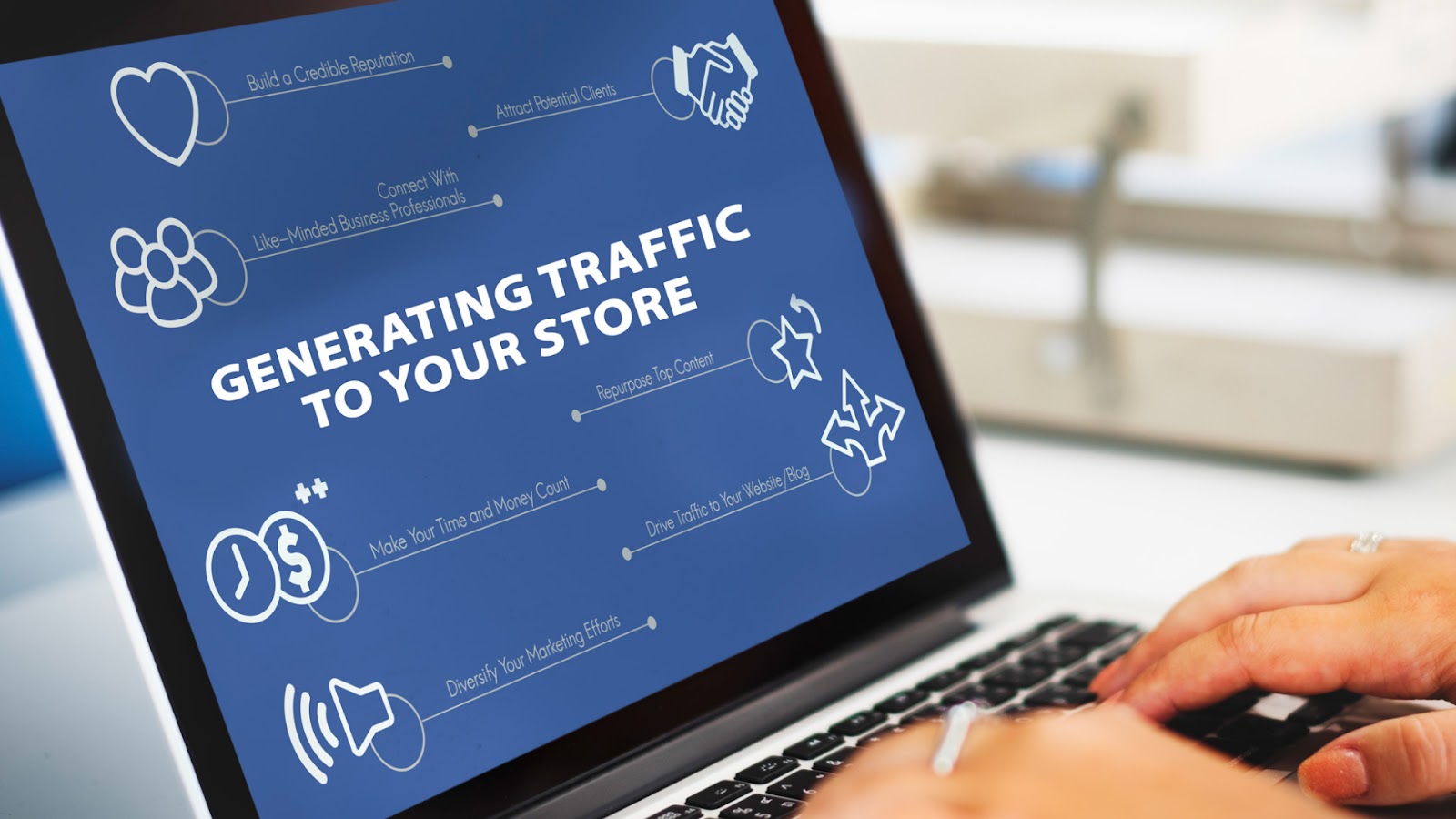
Generating traffic to your e-commerce store is crucial for the success of your business. Here are some reasons why:
- Increase sales: The more traffic your store receives, the higher the chances of making sales. Without traffic, your store is essentially invisible to potential customers.
- Build brand awareness: By generating traffic to your store, you can increase brand awareness and reach a wider audience. This can help establish your brand as a reputable and trustworthy e-commerce business.
- Boost search engine rankings: When you generate traffic to your store, it can improve your search engine rankings. Search engines like Google and Bing prioritize websites with high traffic volumes, which can help you appear higher in search results.
- Gather customer insights: Generating traffic to your store can help you gather valuable insights into your customer base, including demographics, behaviors, and preferences. This information can help you optimize your marketing strategy and product offerings.
- Create opportunities for referrals: When you generate traffic to your store, you create opportunities for customers to refer your business to others. Word-of-mouth marketing is one of the most powerful forms of marketing, and it can help you attract new customers and increase sales.
There are many ways to generate traffic to your e-commerce store, including search engine optimization (SEO), social media marketing, email marketing, and paid advertising. By focusing on driving traffic to your store, you can increase sales, build brand awareness, and establish a successful e-commerce business.
Tips for utilizing social media, email marketing, and search engine optimization to drive traffic to your store
Here are some tips for utilizing social media, email marketing, and search engine optimization (SEO) to drive traffic to your Shopify store:
- Social media: Social media platforms like Facebook, Instagram, Twitter, and Pinterest can be powerful tools for driving traffic to your store. Here are some tips for utilizing social media:
- Create engaging and shareable content that showcases your products and brand.
- Use hashtags to make your content discoverable and increase engagement.
- Run targeted ads to reach specific demographics and drive traffic to your store.
- Partner with influencers or micro-influencers to promote your products to their audience.
- Email marketing: Email marketing is a cost-effective way to stay in touch with your customers and drive traffic to your store. Here are some tips for utilizing email marketing:
- Build a strong email list by offering incentives like discounts or free resources in exchange for email addresses.
- Send regular newsletters that showcase new products, promotions, and content.
- Use segmentation and personalization to send targeted emails based on customer behaviors and preferences.
- Use abandoned cart emails to remind customers of items they left in their cart and encourage them to complete their purchases.
- Search engine optimization (SEO): SEO can help your store appear higher in search engine results, driving more traffic to your store. Here are some tips for utilizing SEO:
- Conduct keyword research and optimize your website content with relevant keywords.
- Optimize your website structure and design for easy navigation and user experience.
- Build high-quality backlinks from reputable sources.
- Use descriptive and keyword-rich meta titles and descriptions for all pages and products.
By utilizing these strategies, you can drive more traffic to your Shopify store, increase brand awareness, and ultimately grow your business.
Benefits of paid advertising and tips for running successful ad campaigns
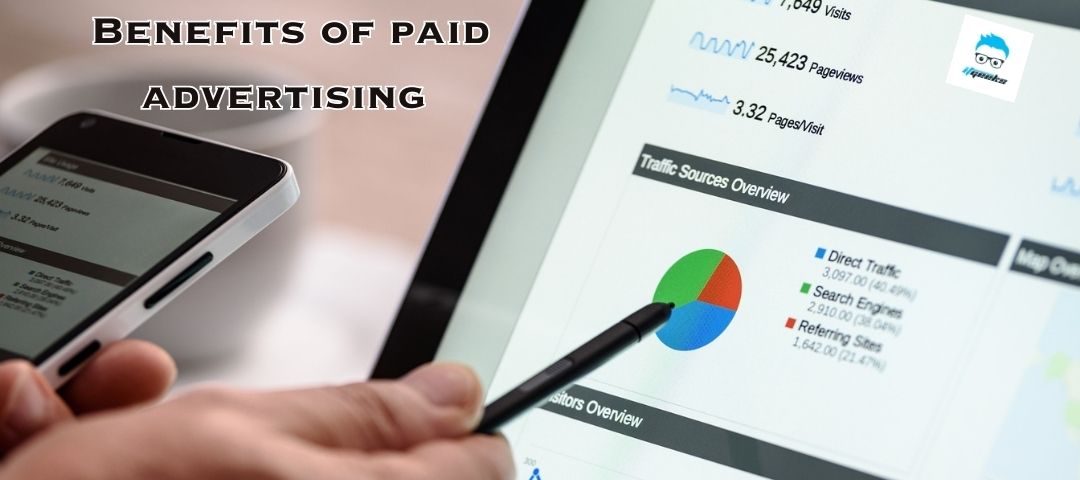
Paid advertising can be an effective way to drive targeted traffic to your Shopify store and increase sales. Here are some benefits of paid advertising:
- Targeted audience: Paid advertising allows you to target specific audiences based on demographics, interests, behaviors, and more. This can help you reach people who are more likely to be interested in your products and increase the chances of making a sale.
- Measurable results: Paid advertising provides you with measurable results, allowing you to track the success of your campaigns and make data-driven decisions to improve your strategy.
- Cost-effective: Paid advertising can be cost-effective, as you only pay for clicks or impressions. By targeting the right audience and optimizing your campaigns, you can maximize your return on investment (ROI).
Here are some tips for running successful ad campaigns on platforms like Facebook and Google Ads:
- Define your audience: Before running any ads, define your target audience based on demographics, interests, behaviors, and more. This will help you create ads that resonate with your audience and increase your chances of making a sale.
- Set a budget: Set a budget for your ad campaigns and monitor your spending to ensure you stay within your budget.
- Create compelling ad content: Use eye-catching images or videos and persuasive copy to grab the attention of your audience and encourage them to click on your ad.
- Test and optimize: Run A/B tests to determine what ad content performs best and optimize your campaigns based on the results. This can help you improve your ROI and make the most out of your ad budget.
- Use retargeting: Retargeting allows you to show ads to people who have previously visited your store, increasing the chances of making a sale.
Building Your Brand and Customer Base
Importance of building a strong brand and customer base for long-term success
Building a strong brand and customer base is crucial for long-term success in e-commerce. Here are some reasons why:
- Differentiation: Building a strong brand helps you differentiate yourself from competitors and stand out in a crowded market. A unique brand identity can attract loyal customers who appreciate your values and mission.
- Trust: A strong brand builds trust with customers. When customers have positive experiences with your brand, they are more likely to trust and recommend your products to others.
- Repeat business: Building a loyal customer base is essential for long-term success. Loyal customers not only make repeat purchases, but they are also more likely to recommend your brand to others, helping to increase your customer base.
- Brand awareness: A strong brand can help increase brand awareness, making it easier for new customers to discover and choose your products.
To build a strong brand and customer base, here are some tips:
- Consistency: Consistency is key when building a brand. Ensure that your messaging, visuals, and customer experience are consistent across all touchpoints.
- Customer service: Providing excellent customer service can help build trust and loyalty with your customers. Respond promptly to customer inquiries and complaints, and go above and beyond to ensure customer satisfaction.
- Personalization: Personalization can help build a deeper connection with your customers. Use customer data to personalize your marketing messages, product recommendations, and customer experience.
- Social media: Social media can be a powerful tool for building brand awareness and engaging with customers. Use social media platforms to showcase your brand personality and connect with customers on a personal level.
Tips for building a strong brand through consistent messaging, storytelling, and customer engagement
Building a strong brand is important for e-commerce success. Here are some tips for building a strong brand through consistent messaging, storytelling, and customer engagement:
- Define your brand message: Define your brand message and ensure that it is consistent across all touchpoints. This includes your website, social media profiles, product descriptions, and customer support interactions. Your brand message should be clear, memorable, and resonate with your target audience.
- Tell your brand story: Storytelling is a powerful way to connect with customers and build a strong brand. Share your brand story on your website, social media profiles, and marketing campaigns. This could include your brand’s history, values, and mission.
- Engage with customers: Engage with your customers on social media and through email marketing. Respond promptly to customer inquiries and complaints, and go above and beyond to ensure customer satisfaction. This can help build trust and loyalty with your customers.
- Use consistent visual branding: Use consistent visual branding across all touchpoints, including your logo, colors, and typography. This can help increase brand recognition and build a strong brand identity.
- Create branded content: Create branded content that aligns with your brand message and resonates with your target audience. This could include blog posts, videos, or social media posts.
- Build a community: Build a community around your brand by creating a branded hashtag, hosting social media challenges, or creating a customer loyalty program. This can help increase engagement and build a loyal customer base.
Strategies for building a loyal customer base
Building a loyal customer base is crucial for long-term success in e-commerce. Here are some strategies for building a loyal customer base:
- Offer excellent customer service: Providing excellent customer service can help build trust and loyalty with your customers. Respond promptly to customer inquiries and complaints, and go above and beyond to ensure customer satisfaction. This can include offering free returns or exchanges, providing personalized recommendations, and addressing customer issues quickly and effectively.
- Create a loyalty program: A loyalty program can incentivize customers to make repeat purchases and increase customer loyalty. Offer rewards or discounts for repeat purchases or referrals, and create a VIP program for your most loyal customers.
- Personalize the customer experience: Use customer data to personalize the customer experience. This could include personalized product recommendations, email marketing campaigns, or personalized messaging on your website.
- Engage with customers on social media: Engage with your customers on social media by responding to comments and direct messages, and reposting customer photos and reviews. This can help build a sense of community around your brand and increase customer loyalty.
- Offer exclusive content or products: Offer exclusive content or products to your loyal customers, such as early access to new products or exclusive discounts. This can help increase customer loyalty and make customers feel valued.
- Provide value beyond the sale: Provide value beyond the sale by offering educational content, blog posts, or social media posts that align with your brand message and resonate with your target audience. This can help build trust and loyalty with your customers.
Expanding Your E-Commerce Empire
Potential for expanding your e-commerce empire beyond your Shopify store

While building a successful e-commerce empire on Shopify is a great starting point, there is potential for expansion beyond your Shopify store. Here are a few ways you can expand your e-commerce business:
- Sell on other marketplaces: In addition to your Shopify store, consider selling your products on other marketplaces such as Amazon, eBay, or Etsy. This can help you reach new audiences and increase your sales.
- Open a brick-and-mortar store: If your business is successful, consider opening a brick-and-mortar store in addition to your e-commerce store. This can help you reach local customers and provide a more personalized shopping experience.
- Wholesale your products: If your business has grown to the point where you can produce products at scale, consider selling wholesale to other retailers. This can help you reach new customers and increase your sales volume.
- Expand internationally: If your business is successful in your home country, consider expanding internationally. This can be done by opening a new Shopify store targeted at a specific country, or by selling on international marketplaces such as Alibaba or MercadoLibre.
- Create a subscription service: If your business sells products that customers purchase frequently, consider creating a subscription service. This can help you generate recurring revenue and increase customer loyalty.
Expanding your e-commerce business beyond your Shopify store can help you reach new audiences, increase your sales, and provide new opportunities for growth.
Tips for selling on other platforms like Amazon and eBay
Selling on other platforms like Amazon and eBay can be a great way to expand your reach and increase sales. Here are some tips for selling on these platforms:
- Research the platform’s requirements: Before selling on any platform, make sure to research the platform’s requirements and fees. Each platform has different rules and fees, so it’s important to understand them before you start selling.
- Optimize your product listings: On platforms like Amazon and eBay, optimizing your product listings is key to attracting customers. Use high-quality product images and write detailed product descriptions that include keywords customers might search for.
- Price competitively: On these platforms, customers often compare prices across multiple sellers. To be competitive, make sure to price your products competitively while still making a profit.
- Provide excellent customer service: Providing excellent customer service is crucial to success on any platform. Respond promptly to customer inquiries and address any issues or complaints promptly.
- Utilize advertising options: Both Amazon and eBay offer advertising options to help sellers increase their visibility on the platform. Consider using these options to help drive sales.
- Fulfill orders quickly and accurately: On these platforms, fast and accurate order fulfillment is key to maintaining a positive reputation. Make sure to ship orders quickly and accurately, and communicate with customers throughout the process.
Benefits of creating a wholesale program for your products
Creating a wholesale program for your e-commerce business can offer several benefits:
- Increase sales volume: By offering your products to other businesses at wholesale prices, you can increase your sales volume and generate more revenue.
- Reach new customers: Selling your products wholesale can help you reach new customers who might not have discovered your products otherwise.
- Build relationships with retailers: Establishing relationships with retailers through a wholesale program can lead to long-term partnerships that benefit both parties.
- Create brand awareness: When your products are sold in retail stores, it can help increase brand awareness and exposure to a wider audience.
- Maintain consistent revenue: Wholesale orders can provide consistent revenue for your business, as they are often larger orders placed by retailers.
- Scale your business: By offering wholesale options, you can scale your business and expand your reach without having to invest in additional marketing or sales efforts.
Automating Your Business for Passive Income
Discuss the importance of automating your e-commerce business for passive income
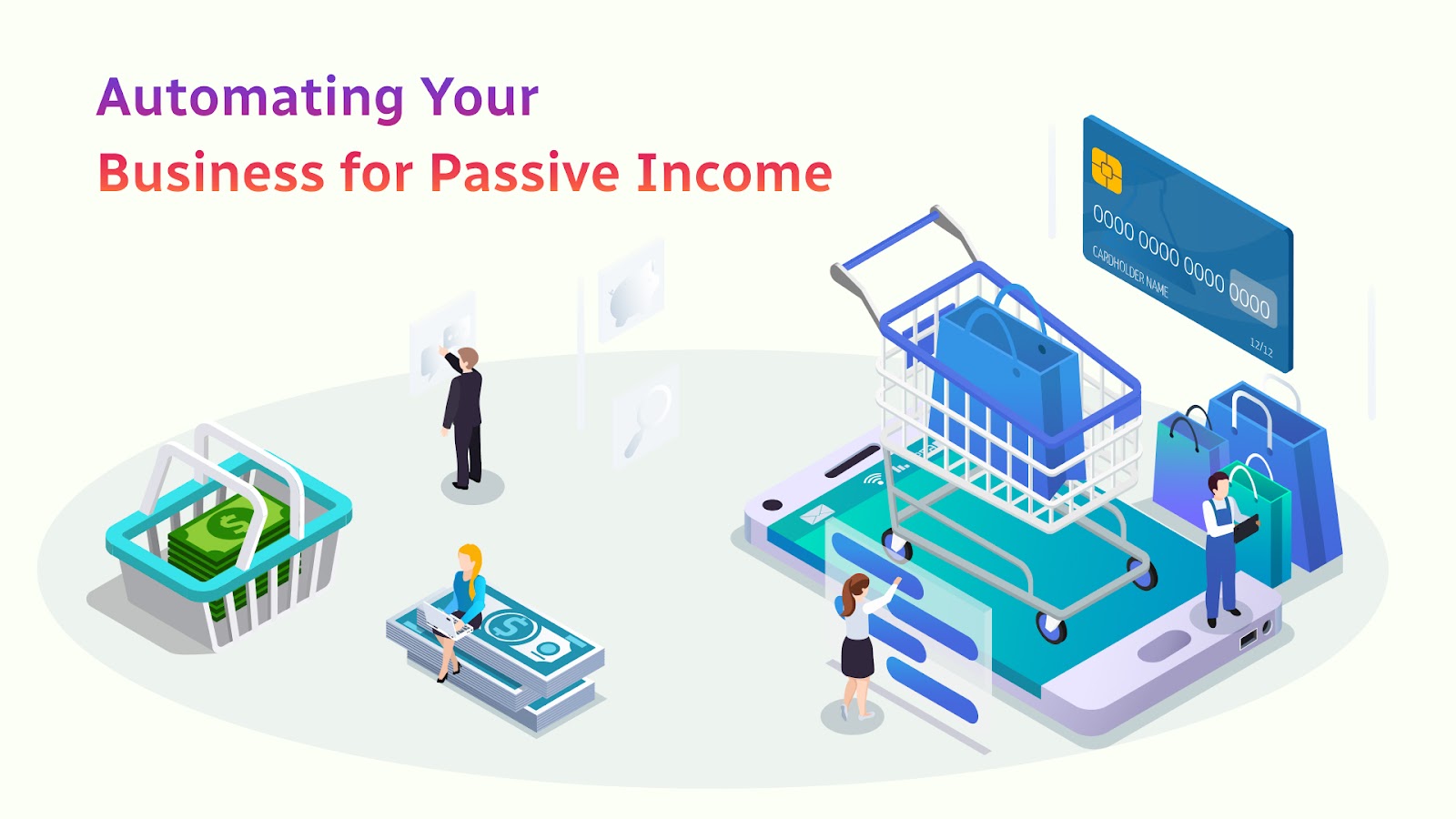
Creating a wholesale program for your e-commerce business can offer several benefits:
- Increase sales volume: By offering your products to other businesses at wholesale prices, you can increase your sales volume and generate more revenue.
- Reach new customers: Selling your products wholesale can help you reach new customers who might not have discovered your products otherwise.
- Build relationships with retailers: Establishing relationships with retailers through a wholesale program can lead to long-term partnerships that benefit both parties.
- Create brand awareness: When your products are sold in retail stores, it can help increase brand awareness and exposure to a wider audience.
- Maintain consistent revenue: Wholesale orders can provide consistent revenue for your business, as they are often larger orders placed by retailers.
- Scale your business: By offering wholesale options, you can scale your business and expand your reach without having to invest in additional marketing or sales efforts.
Tips for automating your business processes
Here are some tips for automating your e-commerce business processes, including order fulfillment and customer service:
- Use an order management system: An order management system (OMS) can automate your order processing and fulfillment, allowing you to easily manage and track orders from multiple sales channels. OMS can integrate with your e-commerce platform and third-party logistics providers, streamlining your entire fulfillment process.
- Implement a chatbot: Chatbots can be used to automate customer service inquiries, such as tracking orders or answering frequently asked questions. With a chatbot, customers can receive immediate support without the need for a customer service representative to be present.
- Use email marketing automation: Email marketing automation can save you time by automatically sending personalized emails to customers based on their behavior, such as abandoned cart reminders or follow-up emails after a purchase.
- Implement social media scheduling tools: Social media scheduling tools can automate your social media posting, allowing you to schedule posts in advance and maintain a consistent presence on your social media channels.
- Use a help desk ticketing system: A help desk ticketing system can help automate customer service inquiries by allowing customers to submit a ticket through a form or email. The system can then automatically route the ticket to the appropriate team member for response.
- Implement a loyalty program: A loyalty program can automate customer retention efforts by rewarding customers for their repeat purchases and encouraging them to continue shopping with your brand.
By automating your business processes, you can save time, improve efficiency, and generate passive income for your e-commerce business.
Potential for outsourcing tasks like product creation and customer service
Outsourcing tasks like product creation and customer service can be a great way to free up your time and focus on growing your e-commerce business. Here are some potential benefits of outsourcing:
- Increased efficiency: Outsourcing tasks to experts in their respective fields can lead to more efficient and effective results, as they have the knowledge and experience to complete tasks quickly and accurately.
- Access to specialized skills: Outsourcing can provide access to specialized skills and expertise that may not be available in-house. For example, outsourcing product creation to a manufacturer or outsourcing customer service to a call center can provide access to specialized resources.
- Cost savings: Outsourcing can be cost-effective, as you only pay for the services you need, rather than hiring and training employees in-house.
- More time for business growth: Outsourcing can free up your time to focus on growing your business and generating revenue, rather than spending time on non-core tasks.
When it comes to outsourcing, it’s important to find reputable and reliable partners who can provide quality services at a fair price. Some popular outsourcing options for e-commerce businesses include:
- Product creation: Consider outsourcing product design, manufacturing, or sourcing to a third-party manufacturer or supplier.
- Customer service: Consider outsourcing customer service to a call center or virtual assistant service.
- Marketing and advertising: Consider outsourcing your marketing and advertising efforts to a digital marketing agency or freelancer.
By outsourcing tasks like product creation and customer service, you can focus on the core aspects of your business and achieve greater success in the long run.
Conclusion:
To build a successful e-commerce empire on Shopify, follow these key takeaways:
- Passive income through e-commerce is a great way to generate revenue without ongoing effort.
- Setting up your Shopify store involves selecting a theme, adding products, and optimizing user experience.
- Generating traffic to your store is crucial and can be achieved through social media, email marketing, SEO, and paid advertising.
- Building a strong brand and customer base is essential and can be achieved through consistent messaging and customer engagement.
- Automating your e-commerce business can generate passive income and be achieved through outsourcing tasks like product creation and customer service.
Are you ready to start building your own e-commerce empire on Shopify? Don’t go it alone – our team at ITGeeks is here to help you every step of the way. With our expert guidance, you can optimize your Shopify store for maximum conversions, drive traffic to your site through various marketing strategies, and build a strong brand and customer base. Whether you’re just getting started or looking to take your existing e-commerce business to the next level, we’re here to support you. So don’t hesitate – to take action today and start building your own e-commerce empire with Shopify, with the help of ITGeeks!




